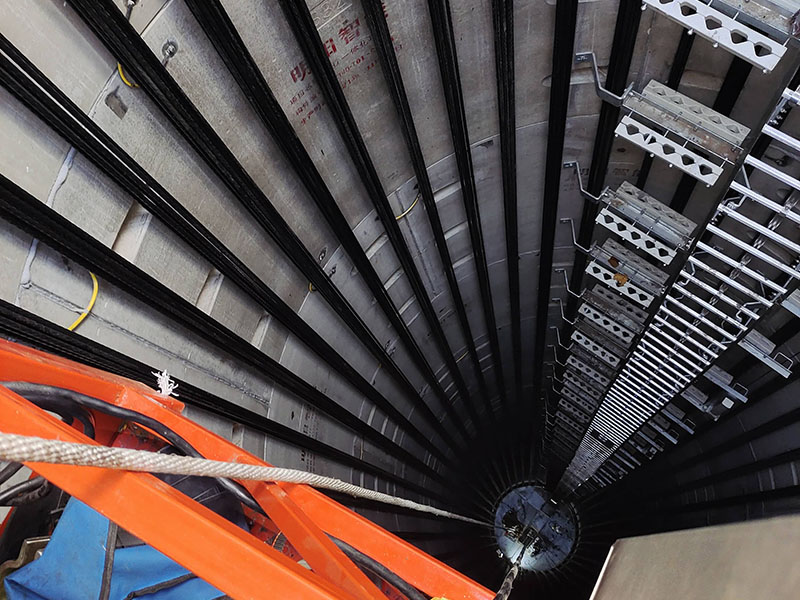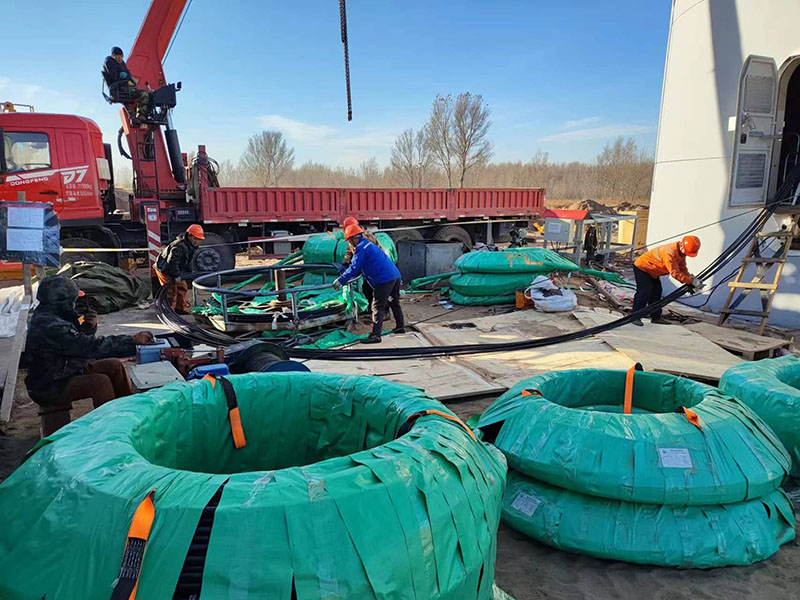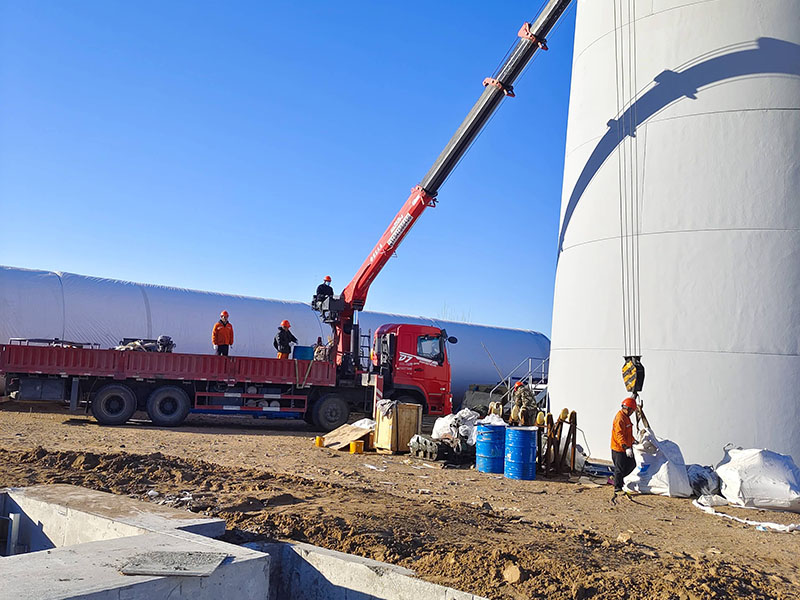Tongliao wind power base project in Inner Mongolia

Background technology
-
With the vigorous development of the wind power industry, from the offshore area with high wind speed to the inland area with low wind speed, in order to obtain greater wind power to drive the wind turbine blades, the wind power tower is getting higher and higher, from pure steel tower to steel concrete tower. In the steel-concrete tower, the lower section of the concrete tower is changed from the previous cast-in-place to the segmental prefabricated assembly, and the strength, stiffness and stability of the concrete tower structure become the key factors of the safety of the concrete tower. The longitudinal arrangement of prestress along the height direction of the tower is an effective measure to solve the lack of strength, stiffness and stability of the concrete tower. The longitudinal prestressed cable is divided into internal and external, and the advantages of the longitudinal external cable are gradually recognized due to the convenient construction and strong applicability of the high concrete tower (60m~150m).

- The prestressed steel strand external cable structure system for the wind tower comprises a steel strand cable, an isolation anti-wear device, a restraint shock absorption device and a foundation conversion support assembly, the isolation anti-wear device comprises an anti-wear sleeve, an isolation sleeve and a heat shrinkable sleeve, the anti-wear sleeve is sleeved outside the cable, and the isolation sleeve is arranged on several points of the outer round steel strand and is fixed through a heat shrinkable sleeve; The restraint damping device comprises a two-half splint and a hinged damping rod; In the installation state, the foundation conversion bracket assembly is pre-embedded and poured in the tower foundation concrete, the upper end of the steel strand cable is locked at the platform backing plate of the tower top through the upper end anchor assembly, and the end of the steel strand cable body penetrates into the supporting cylinder hole of the foundation conversion support assembly and is anchored through the tension end anchor assembly; The isolation anti-wear device is positioned at the corner structure at the top of the tower; The restraint damping device is installed at the lofting position of the tower and the strand cable. The system is conducive to the installation and construction of the narrow space structure at the top of the tower, with good seismic effect, ensuring the quality of cable construction and prolonging its service life.

Project introduction
- Tongliao 1 million kilowatt wind power base project is located in Inner Mongolia Autonomous Region, Tongliao City, Zalut Banner and Horqin Left Wing Middle Banner, the project focuses on the use of prestressed cable technology to greatly reduce the manufacturing cost and installation cost, and greatly improve the overall engineering effect. The installed capacity of the wind power base is 1 million kilowatts, including 500,000 kilowatts in the middle banner of the left wing of Horqin and 500,000 kilowatts in the Zalut banner, and each sub-wind farm is equipped with 1 220kV booster station and 1 on-site maintenance center, all of which are located near the 220kV booster station. The regional wind energy resources are relatively abundant, and the wind speed at a height of 90m in most areas exceeds 7.0m/s. The wind power base has installed 294 wind turbines with a single capacity of 3.4MW, with an annual on-grid electricity of 3,052.81GW.h and an annual equivalent full load hour of 3,054 hours.

- Compared with coal-fired power plants of the same capacity, the completion of this wind farm can save 967,874.6 tons of standard coal, reduce sulfur dioxide emissions by 7,227.64 tons, and reduce nitrogen oxides by 9,581.96 tons per year. The emission of carbon dioxide was reduced by 2,583,093.90 tons, the emission of soot was reduced by 1,256.98 tons, and the emission of ash was reduced by 375,365.65 tons.

